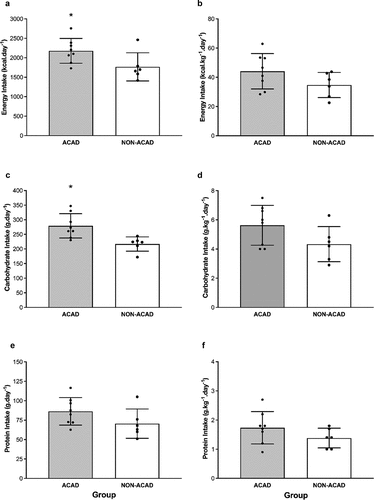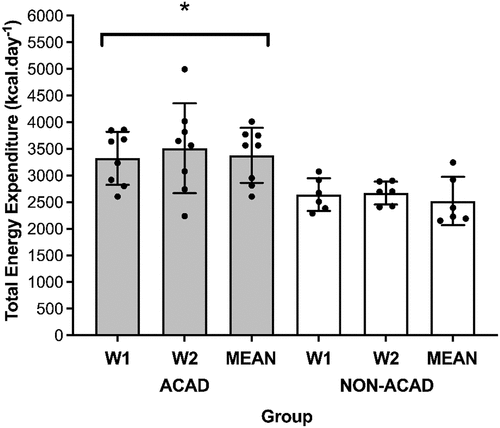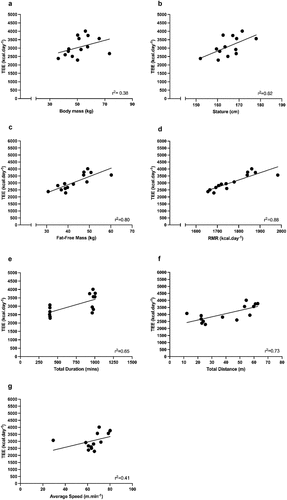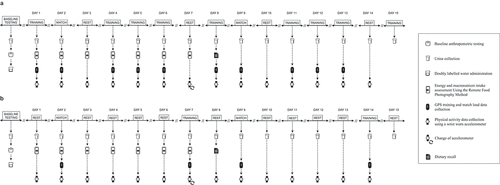Figures & data
Table 1. Baseline player characteristics.
Table 2. An overview of pitch-based training and match schedules with GPS metrics for each squad. GPS metrics shown are an average of two in-season microcycles.
Figure 2. Overview of accumulative training and game duration and external load characteristics. (a) total duration (b) total distance (c) average speed (d) total high-speed running (e) total accelerations and (f) total decelerations across academy training sessions (n = 8) and matches (n = 2) and non-academy group training sessions (n = 2) and matches (n = 2). Black dots represent individual data points. *Denotes significant difference from the non-academy group for week 1, week 2 and 14-day period, p < 0.05.

Table 3. Average daily ENMO (Euclidean Norm Minus one; mg), intensity gradient (IG; mg), moderate-to-vigorous activity (MVPA, mg) and time spent within different physical activity zones (minutes) between academy and non-academy groups across the 14-day assessment period.
Figure 3. Overview of the mean daily absolute energy (a), carbohydrate (c), and protein (e) intake, and their relative values (b), (d) and (f) respectively, across the training week between groups. *Denotes significant difference between groups, p < 0.05. Grey bars represent energy and macronutrient intake in the academy group, white bars represent the non-academy group. Black dots represent individual data points.

Figure 4. Overview of mean daily absolute energy and macronutrient intake throughout the week one training microcycle. Absolute energy (a), carbohydrate (c) and protein intake (e) of the academy group presented in black and white bars, with white bars representing food and drink provision from the host club. Absolute energy (b), carbohydrate (d) and protein intake (f) of the non-academy groups is presented in light grey bars.

Figure 5. Mean total daily energy expenditure for week one, week two and over the 14-day period. Grey bars represent mean academy data, white bars represent mean non-academy data. Black dots represent individual data points. *Denotes significant difference from the non-academy group, p < 0.05.

Figure 6. The relationship between mean daily TEE of both groups and body mass (A; p = 0.38), stature (B; p = 0.02), FFM (C; p < 0.01) and RMR (D; p < 0.01). In addition, the relationship between mean daily TEE and training and match-play duration (E; p = 0.01), total distance (F; p < 0.01) and average speed (G; p = 0.03).


